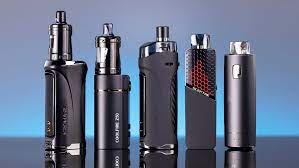Writing for Financial Times authors Oliver Barnes and Alexandra Heal explain that the use of electronic cigarettes, or e-cigarettes, has been on the rise in recent years as they have been touted as a less harmful alternative to traditional cigarettes. However, a new trend has emerged among young people with the rise of brightly colored, single-use devices with flavors like “cotton candy” and “green gummy bear.” These devices, made popular by Chinese-owned brands like Geek Bar, Elf Bar, and Lost Mary, have become incredibly popular among young people, including those who are not legally old enough to purchase them.
This trend has caused concern among parents and educators alike, as the use of these devices has become prevalent in schools. Headteacher Dan Cleary first became aware of the trend when he noticed a sickly sweet scent lingering outside the school toilets upon pupils’ return after the summer holiday last year. Since then, he has had to discipline students regularly for stashing a “vape” in their backpack or blazer pocket.
According to the NHS, 18% of 15-year-olds in England and Wales were using e-cigarettes in February last year, an all-time high. Additionally, the number of 11- to 17-year-olds who were vaping in Britain more than doubled last year from 3.3% in 2021 to 7%. However, this latest vaping craze has created a whole new problem – tons of electronic waste.
Unlike Juul, the previous market leader, which was blamed for sparking a “vaping epidemic” among US teenagers, these single-use e-cigarettes cannot be reused or recharged. The devices are often discarded like cigarette butts outside the school gates, according to Cleary, creating a significant environmental problem.
However, the materials in single-use vapes could have a valuable second life if recycled properly. Each device contains about 0.15g of lithium in its battery, a metal classified as a “critical” raw material by the US and EU. The International Energy Agency has warned it could be in short supply within two years as manufacturers race to scale up electric car production. More than 90 tonnes of lithium were used in the production of the $5bn worth of single-use vapes sold globally last year, according to Financial Times estimates based on data from the research group Euromonitor, the consultancy ECigIntelligence and the electricals recycling non-profit Material Focus.
Furthermore, single-use e-cigarettes contain roughly 1,160 tonnes of copper, enough for 1.6mn home electric vehicle chargers. It’s clear that these devices represent a significant waste of valuable resources, and manufacturers globally have made little effort to enable the recycling of their products and prevent them from ending up in landfills.
The UK and EU have legal obligations for electronics producers to fund the recycling of a tonnage equivalent to what they put on the market. However, only 16 out of 150 vape producers and importers in the UK analyzed by Material Focus are registered to do so. Green Fun Alliance, a UK-based distributor owned by the company behind Elf Bar and Lost Mary, only registered late last year despite selling the products in the UK for about two years. Its £600mn of sales accounted for more than 70% of the UK disposable vape market in 2022.
With concerns over the environmental impact of these devices growing, policymakers are becoming increasingly agitated about the waste associated with the product, on top of concerns over underage uptake. Shane MacGuill, head of nicotine research at Euromonitor, believes that regulation already approaching in Europe and parts of the US will quickly become “kryptonite” for the industry.
To read the full article visit www.ft.com
























